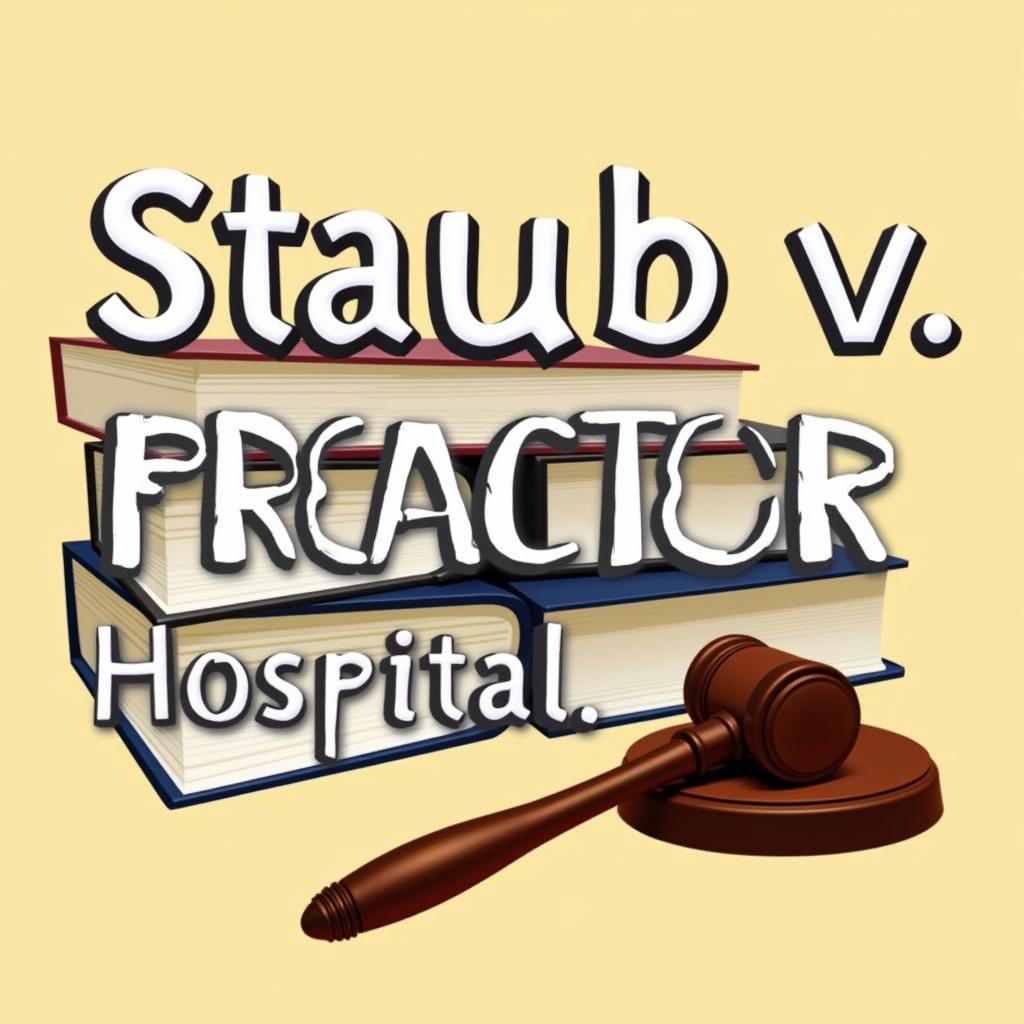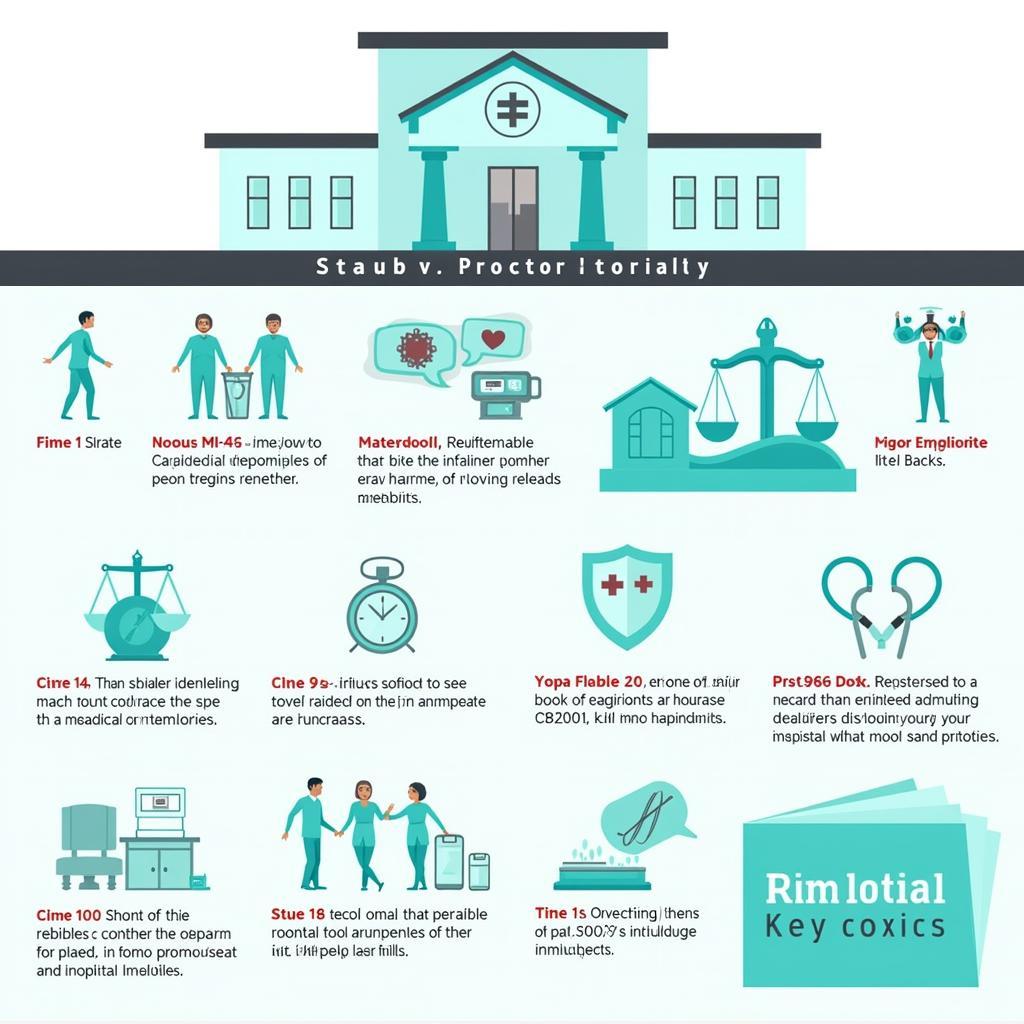The landmark Supreme Court case Staub v. Proctor Hospital significantly impacted employment discrimination law, particularly regarding employer liability for discriminatory actions taken by supervisors. This case clarifies the “cat’s paw” theory of liability, which applies when a biased supervisor influences a neutral decision-maker to take an adverse employment action against an employee. Understanding Staub v. Proctor Hospital is crucial for both employers and employees navigating the complexities of workplace discrimination.
Decoding the Cat’s Paw Theory in Staub v. Proctor Hospital
The “cat’s paw” theory, derived from a fable where a monkey tricks a cat into retrieving chestnuts from a fire, describes a situation where a seemingly unbiased decision is actually influenced by the discriminatory animus of another individual. In Staub v. Proctor Hospital, Vincent Staub, a hospital employee, claimed he was fired due to his supervisor’s animosity towards his military service obligations. While the ultimate decision to terminate Staub was made by a higher-up who lacked this bias, the Supreme Court found that Proctor Hospital could still be held liable if the supervisor’s discriminatory actions were the proximate cause of Staub’s termination.
 Staub v. Proctor Hospital Supreme Court Case illustration
Staub v. Proctor Hospital Supreme Court Case illustration
How Staub v. Proctor Hospital Impacts Employers and Employees
Staub v. Proctor Hospital has profound implications for both employers and employees. For employers, it underscores the importance of establishing clear anti-discrimination policies and ensuring that all employment decisions are based on objective criteria, not influenced by the biases of individual supervisors. This case highlights the need for thorough investigations into employee complaints and emphasizes the importance of independent review of disciplinary actions. For employees, it provides a legal avenue for redress when they believe they’ve been subjected to discriminatory treatment, even if the final decision-maker was unaware of the bias.
Key Elements of the Staub v. Proctor Hospital Ruling
The Supreme Court’s decision in Staub v. Proctor Hospital established several critical points concerning employer liability for discriminatory acts. The Court determined that an employer can be held liable even if the ultimate decision-maker is unbiased, as long as the biased supervisor’s actions were the proximate cause of the adverse employment action. This means the supervisor’s influence must be a significant factor in the decision, not simply a minor contributing factor. The Court also clarified that an employer can avoid liability if it conducts an independent investigation and makes a decision based on its own findings, rather than relying solely on the biased supervisor’s recommendations.
 Impact of Staub v. Proctor Hospital on Employment Law
Impact of Staub v. Proctor Hospital on Employment Law
What Does Staub v. Proctor Hospital Mean for HR Practices?
Following the Staub v. Proctor Hospital ruling, Human Resources departments must take proactive steps to minimize the risk of cat’s paw liability. This includes implementing robust training programs for supervisors on anti-discrimination laws, establishing clear reporting procedures for employees who experience or witness discrimination, and conducting thorough and impartial investigations into all complaints. Documentation of these processes is essential in demonstrating due diligence and protecting the organization from potential legal action.
Protecting Yourself from Cat’s Paw Discrimination
Both employers and employees can take steps to mitigate the risks associated with cat’s paw discrimination. Employers should prioritize fair and objective performance evaluations, ensure consistent application of disciplinary procedures, and create a culture where employees feel comfortable reporting discriminatory behavior without fear of retaliation. Employees, on the other hand, should document any instances of perceived discrimination, including emails, memos, and witness accounts, and promptly report these incidents to the appropriate channels within the organization.
Why is Staub v. Proctor Hospital Still Relevant Today?
Staub v. Proctor Hospital remains a cornerstone of employment discrimination law, offering valuable guidance in navigating the complexities of workplace bias. The principles established in this case continue to inform court decisions and shape HR practices, ensuring that employers are held accountable for discriminatory actions and employees are protected from unfair treatment. Understanding this case is vital for fostering a fair and equitable workplace for everyone.
In conclusion, Staub v. Proctor Hospital has significantly reshaped the landscape of employment discrimination law. By understanding the implications of this landmark case, both employers and employees can take proactive steps to prevent and address discriminatory practices, promoting a more just and inclusive work environment.
 Staub v. Proctor Hospital Key Takeaways and Future Implications
Staub v. Proctor Hospital Key Takeaways and Future Implications
When you need assistance, please contact us at Phone Number: 02437655121, Email: [email protected] Or visit us at: No. 298 Cau Dien Street, Minh Khai, Bac Tu Liem, Hanoi, Vietnam. We have a 24/7 customer service team.